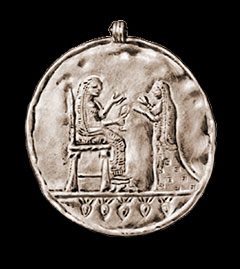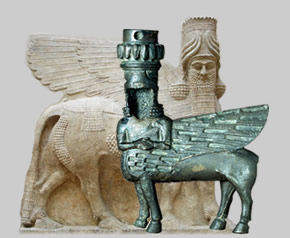The Origins
Noah and Ararat
 Noah descending from Mount Ararat, by Ivan Aivazovsky
Noah descending from Mount Ararat, by Ivan Aivazovsky
Immodestly, Armenians consider themselves direct descendants of Noah, survivor of the Biblical flood. According to Genesis, …the boat came to rest on a mountain in the Ararat range. Ararat, located in the heart of Armenia, was a Holy Mountain for the peoples of the ancient world. Many ancient scriptures placed the Biblical Garden of Eden in the Land of Armenia also called the Land of Ararat.
Tradition states that Noah founded Nakhichevan, the oldest of the Armenian cities. Moses Khorenatsi , historian of the 5th century, presents a detailed genealogy of the Armenian forefather Haik from Japheth, Noah’s son. Thus, the territory of the Armenian Plateau is regarded as the cradle of civilization, the initial point for the further spreading of mankind all around the world.
Haik
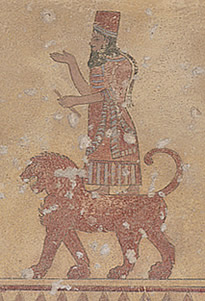 Haik is pictured here on a wall of Haldi Temple, in Erebuni fortress.
Haik is pictured here on a wall of Haldi Temple, in Erebuni fortress.
The oldest myths reflect the wars of ancient Armenians against the neighboring Assyrians. Haik, considered the patriarch of the Armenian people, led his army to defeat the Assyrian giant Baeleus. By approximately 2100 BC, a prototype of the first Armenian state was founded. Even now, Armenians call themselves Hai (pronounced high), and their country – Haik or Haiastan, in honor of Haik. The Hittite scripts also mention a Haiasa country. Meanwhile, the Assyrian cuneiform writings designate Armenia as Urartu (Arartu), which means Ararat. The Old Testament also associates Armenia with the Mount Ararat (the Kingdom of Ararat).
In ancient times, Armenia was equally associated with the rivers Tigris, Euphrates, Araks and Kura. That is why the neighboring Assyrians also called Armenia, Nairi, standing for Riverland, Country of Rivers.
Haik, once thought to be just a hero of an epic legend, is presently accepted by some researches as an actual chieftain of Armens in the 3rd millennium BC. Historians proved that later Haik was deified and proclaimed the prime god in the pantheon of gods in the pagan Armenia.
One of Haik’s most famous scions, Aram, considerably extended the borders of his country, transforming it into a powerful state. Since then, Greeks and Persian began to call the country Armenia, i.e. the country of Aram.
Ara the Beautiful
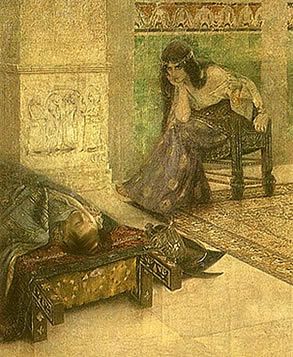 Semiramis and Ara the Beautiful, by Vardges Surenyants
Semiramis and Ara the Beautiful, by Vardges Surenyants
Aram’s son, Ara the Beautiful succeeded him. A very romantic Armenian legend tells that Ara was so handsome that the Assyrian Queen Semiramis (the same who founded Babylon and planted its marvelous hanging gardens) fell in love with him. Ara repeatedly rejected her love proposals until the desperate queen began war with him. The Assyrians troops won the furious battle, and Ara was killed, in despite of Semiramis’s order to preserve his life. Inconsolable Semiramis reputed to be sorceress took his body and tried in vain to enliven him. When Armenians advanced to avenge their leader, she disguised one of her lovers and spread the rumor that Gods brought Ara back to life. As a result, the war was ceased.
Van and Yerevan
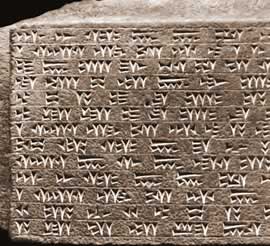 The inscription of King Argiste about the foundation of Erebuni (present day Yerevan).
The inscription of King Argiste about the foundation of Erebuni (present day Yerevan).
History attributes the building of Van, one of the most ancient Armenian cities at the shore of the salt lake of the same name, to the legendary Semiramis. Another ancient Armenian city is Yerevan, capital of today’s Republic of Armenia. Its foundation dates from 782 BC, which is reported in a cuneiform writing of King Argiste.


